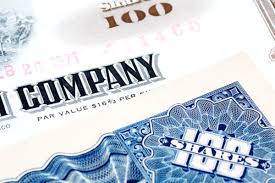Will your business survive losing you?
Most entrepreneurs are a rare breed — full of optimism and confidence. But that faith and certainty can also make them feel invincible. Every business downturn will be the last, every new year will be another record, and every good leader retires happily with their family.
Unfortunately, none of us are invincible. And if you’re like many business owners, a significant portion of your wealth — and your family’s income — is derived from your business.
Consider taking these practical steps to minimize the effects of your death or incapacity on your family, employees and business:
Partnerships
If you have partners, update your buy-sell agreement to be sure it reflects your current business situation. I’ve seen many business owners set these agreements up when they start or purchase their company, only to let them sit for 15 years, unchanged as partners come and go and as business and market conditions change.
Many business partners fund their buy-sell agreements with life insurance. Insurance proceeds can be used to purchase your ownership interest from your estate. Your family is made whole and the business isn’t burdened with debt.
Get an updated estimate of value every 2 to 3 years, then adjust your buy-sell agreement and amount of life insurance accordingly. If you don’t, both your family and your business could be mired in litigation and/or face financial difficulty. As valuation experts, we’re often involved in settling disputes over value.
Consider this scenario. The fair market value of a company is $10 million, but it is insured for just $4 million. Two 50/50 partners have $2 million of life insurance on the other partner. If a partner dies, there will only be $2 million to pay the departed partner’s estate, leaving a $3 million gap. That’s a significant liability for the company to bear, and paying down that debt could mean forgoing growth investments for years to come, negatively affect the company’s ability to compete and reducing the chances of the departing partner’s estate getting paid.
Sole Owners
If you can, build up a management team that can carry on without you. Hire and groom your eventual successor. The better key employees are able to operate the business without you do, the better off your company (and family and partners) will be in the event of your death, illness (or even a business sale).
Even if you don’t have a partner, life insurance can still be a good tool. Proceeds can sustain your family for a while, buying them time to sell the business or establish new leadership. It can also provide the business with the extra equity necessary to hire a transitional CEO or increase management salaries after you’re gone.
Beyond life insurance, you should have a written contingency plan in place to transition business leadership and ownership if you die or become incapacitated.
Contingency Letter
Many business owners have life and disability insurance and a trust, will, power of attorney, medical directive and related documents in place, but few have prepared a letter of guidance to their spouse and family on what to do with their company if something happens to them. We have a Sample Contingency Letter that we share with clients that don’t already have something like this in place.
Whether your plan involves a family member or key employees stepping into your leadership shoes, whether it involves a sale of the company or transfer to existing partners or employees, you’ll want to sit down and talk through your plan with everyone involved, including your spouse, partners and leaders, attorney and CPA.
Sorry for the morbidity here, but all of us business owners need to put our entrepreneurial optimism aside once in a while to plan for the worst. There may be nothing worse than losing a loved one, than when that tragedy is compounded by the stress and conflict that results when survivors are left with a distressed business and no clear plan for moving ahead.
For advice on contingency planning or selling a business, contact Al Statz, founder and CEO of Exit Strategies Group, Inc., at alstatz@exitstrategiesgroup.com.

 The answer, according to
The answer, according to 
 Buy-sell agreements that contain a clause that values stock at less than fair market value can be disregarded for tax purposes. It is important to consider the requirements of
Buy-sell agreements that contain a clause that values stock at less than fair market value can be disregarded for tax purposes. It is important to consider the requirements of  It is tempting to select a formula approach to pricing shares when business partners come and go. After all, a formula is easy for everyone to understand, and in theory at least, inexpensive to apply. If you’re satisfied with getting to a price, any price, then congratulations – job done. But the goal is to arrive at a price that is fair to all concerned. This article discusses some of the unforeseen problems with buy-sell pricing formulas that we as valuation experts encounter frequently.
It is tempting to select a formula approach to pricing shares when business partners come and go. After all, a formula is easy for everyone to understand, and in theory at least, inexpensive to apply. If you’re satisfied with getting to a price, any price, then congratulations – job done. But the goal is to arrive at a price that is fair to all concerned. This article discusses some of the unforeseen problems with buy-sell pricing formulas that we as valuation experts encounter frequently. When it comes to valuing a business for tax filings, M&A transactions, ESOP’s and most other purposes, business appraisers are usually free to use all of the methodologies in their arsenal. But, when it comes to Buy-Sell Agreements that govern the sale or exchange of interests among closely-held business owners, many of these agreements specify a fixed amount or formula to price equity interests. Recently our firm analyzed the valuation and funding-related provisions used in thirteen buy-sell agreements that we encountered over the past several months.
When it comes to valuing a business for tax filings, M&A transactions, ESOP’s and most other purposes, business appraisers are usually free to use all of the methodologies in their arsenal. But, when it comes to Buy-Sell Agreements that govern the sale or exchange of interests among closely-held business owners, many of these agreements specify a fixed amount or formula to price equity interests. Recently our firm analyzed the valuation and funding-related provisions used in thirteen buy-sell agreements that we encountered over the past several months.

